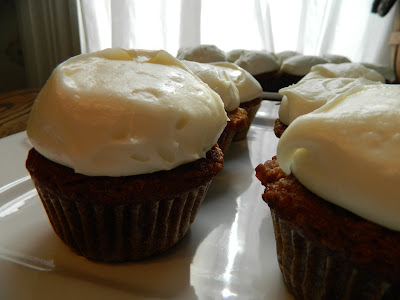A little while ago, one of my College friends asked me to help her with some basic food and cooking tips. She has battled cancer and was interested in pursuing a diet that was cleaner and simpler, using whole foods to help her body fight the illness in the most effective way.
Everyone should check with their Primary Care Provider to ensure that any food or lifestyle is safe for them. That said, most people will benefit from filling their pantries and plates with locally sourced, organic-when-possible-and/or-affordable, seasonal produce, meat and dairy. When choosing fruits and vegetables, try to gather a selection of brightly colored options. The more saturated the color, the higher the benefit of the anthocyanins that are contained inside. Anthocyanins belong to a class of molecules called flavonoids which are powerful antioxidants. For instance, when a sweet potato is cut in half, the bright orange color goes all the way through the tuber.

Many people have chosen a vegetarian or vegan lifestyle. Vegetarians typically don't eat meat of any kind, but do use dairy (which includes eggs), honey and other animal by-products. Vegans, on the other hand will not use any sort of animal product. Strict Vegans will even avoid yeast and honey. Both Vegetarians and Vegans tend to use soy products as a protein replacement.
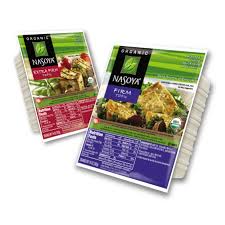
When you want to use Silken Tofu as a protein substitute in baked goods,
use ¼ cup tofu for every 1 egg. Put the tofu in a food processor along with a
little PLAIN soymilk to loosen, and whiz on high to get it liquid-y.
Some recent research has suggested that soy products can increase hormones which can elevate a woman's risk of cancer. Soy products are wonderful, and completely appropriate in many cases. However, knowledge is power. Talk to your PCP if you're concerned.
To get the most out of extra firm tofu, freeze it over night, then thaw
and drain before cutting. Try pressing it overnight in a
colander with a weighted plate set on top of it to eliminate extra
water. Then the tofu will sear better in a skillet, and provide a more acurate meat-like “mouth
feel”.
A wonderful group of plants to plant and cook with are members of the Allium family. These include onions, garlic, leeks and chives. All Allium bulbs and foliage are not only easy to plant, harvest and store, they are downright necessary in the kitchen and provide reliable support for the immune system. Use garlic liberally. It is wonderful for the cardiovascular
system and has great immune boosting properties. Don’t be put off by the
breath-thing. Good flavor and good health are more important…or chew some mint
after. IMPORTANT: to maximize the potency of garlic, chop, mince or slice- then
wait 15 minutes before eating. The two chemicals that are beneficial mix
together when the flesh of the bulb is cut. It takes 15 minutes for them to
reach their most potent point. Try to limit the cooking time. All fruits and
veg are most healthy with the least amount of cooking time.
Mine your grocery for shelf-stable items like GROUND flax
seeds (don’t bother with flax seeds that are not ground, they simply run
through your system with ZERO benefits and they’re costly), chick pea flour and soy flour.
Bob’s Red Mill is the BEST!! Look on the internet for 5 pound bags. Local
groceries usually only carries one pound bags.
Go to the trouble of making your own granola blend. It’s a
fun project to involve the kids in, it’s wonderfully soul-satisfying to eat
your own cereal, and YOU control the ingredients that are going into your body!
Store in an airtight container on your pantry shelf. Adding things like nuts and dried fruit increase the nutritional content and flavor of your granola blend...Remember that QUALITY dried fruit packs as much a
nutritional punch as fresh. The only negative is a slightly higher natural
sugar content, but that’s a hair-splitter. Also, dried fruit is shelf-stable,
and can be re-hydrated in boiling water poured over it and left to sit for a
couple of hours. It’s not an exact approximation of fresh, but still a good
choice.
Stay away from anything processed or artificial. This includes sugars and fats. There are lots of creative choices when in comes to sweeteners. Agave Nectar is America's current darling...think for yourself when considering the expense of Agave Nectar. There is
conflicting information about long-term use of this sugar substitute and it has
an odd overly-sweet flavor note. Studies show that it contains roughly 1.5x the amount of sugar as compared to cane or beet sugar. In other words a little goes a long way. Go for GRADE B maple syrup (the best to cook and bake with), molasses, sorghum, brown sugar, raw
sugar or honey. Check out
www.benefits-of-honey.com
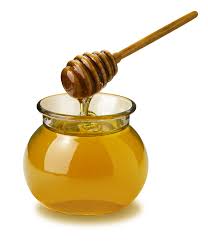
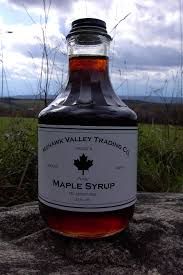
One note on honey. Make sure that it is local or from U.S.
farms only! Read the labels carefully. Honey from Asia, South or Central
America is not regulated at all. It’s cheaper but can contain dangerous
chemicals. Whatever the bee takes to the hive is in the honey.
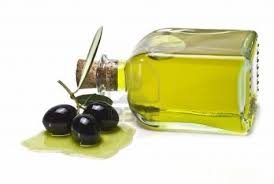
As far as fats go, remember to stick with natural products. Vegetable, nut and seed oils are terrific in dressings, sautes and stir-frys. Olive oil is best for a wide variety of uses, but does have a low smoke point, so is better for cooler cooking techniques. Try to use extra virgin olive oil whenever possible.
It’s more expensive, but loaded with Omega-3 fatty acids and flavor! Use canola oil if you
want a neutral background flavor. Even butter, especially locally made butter, has wonderful flavor and contributes to nearly any dish. Stay clear of anything that lists Partially-Hydrogenated in it's list of ingredients. Anything partially-hydrogenated is by nature, literally one molecule short of being plastic and can't be efficiently metabolized by the human body.
A whole-food diet is work. There's no way around it. You have to think about what you're putting into your body as well as how best to work with whatever season's offerings you may have at the time. Fresh, local and seasonal meats and produce can also be expensive, adding another component that must be considered. Here are a few tips to help mitigate the effort:
1. Use your Supermarket
to help you with some of the work. For example, if you want fresh pineapple,
ask the produce manager if there is any fresh cut available. Many markets have
“vegetable butchers” on site to help you with this. Buy grains in bulk and store in your own airtight containers. Purchase cheese at the deli section and wrap it yourself; cheese needs to breathe to stay flavorful.
2. Cook meals ahead and store them in the freezer. You are essentially making your own convenience food that will be ready for you when you are ready for it. Convert recipes to make more of each batch.
You can always convert a recipe by this
formula: New/old. For instance, if the yield on a recipe is for 4 portions and
you only want one, just divide. If the yield is 3 and you want 10 portions, it
is 10/3=3.3, so multiply every ingredient amount by 3.3 and you’ll have the
correct quantity for the desired yield. Keep in mind that fractions have to be
converted to decimals and then multiplied. Here is a table for fractions to decimals: http://math2.org/math/general/arithmetic/fradec.htm
3. Prep ahead on the weekend or on a quiet evening. Par-cook items ahead so actual cooking time is decreased. Anytime you see
the term “Par-cooked, par-boiled, etc” …”par” refers to a light, initial
cooking, then cooling and reserving the product for further use.
4. Contact your county's Ag Extension Office. Ask them for a map of Farmer's Markets. Buy directly from farmers either at Farmer's Markets or from their farm. Be sure to call ahead when visiting farms so someone will be there to help you. CSA (Community Supported Agriculture) programs are also wonderful. For a weekly, monthly or seasonal fee, you get a box of whatever the farm has available all through the growing season. There are produce, meat and dairy CSAs.
A whole-food lifestyle is a commitment to the health of your body and spirit. Your family and friends will benefit as well. It's not just about eating healthy, real food. It's the pursuit of an understanding of how and where our food grows, is harvested and preserved. It's about appreciating each season and the bounty it offers. A whole-food lifestyle reminds us all that we only have one Earth; the soil of which provides us our health and will sustain us as we sustain it.






 In small portions, roll the dough into "snakes". Cut small segments and roll the segments against the back of a fork. The grooves and dimple that result help sauce and toppings adhere to the gnocchi.
In small portions, roll the dough into "snakes". Cut small segments and roll the segments against the back of a fork. The grooves and dimple that result help sauce and toppings adhere to the gnocchi. Let the gnocchi rest on a floured sheet pan. Drop into boiling water and
boil until the dumpling rises to the surface. Remove with a slotted
spoon to a waiting bowl. Top with your favorite choices or mix with
cheese and bake for a scalloped "casserole" gnocchi.
Let the gnocchi rest on a floured sheet pan. Drop into boiling water and
boil until the dumpling rises to the surface. Remove with a slotted
spoon to a waiting bowl. Top with your favorite choices or mix with
cheese and bake for a scalloped "casserole" gnocchi.







